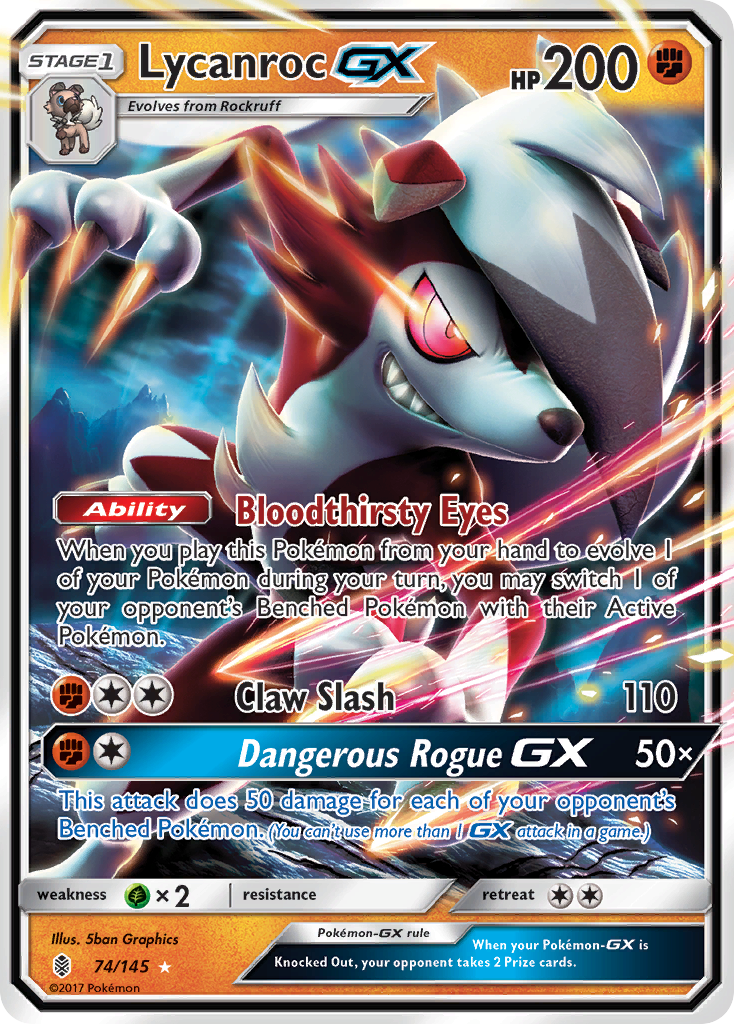Old Dog, New Tricks — The Second-place ZoroRoc List from Collinsville
Hello, PokeBeach readers! This past weekend in Collinsville was quite the experience. I ended up playing a Zapdos / Jirachi list similar to what I played at Oceania Internationals. My teammates and testing group, on the other hand, played Zoroark-GX / Lycanroc-GX / Lucario-GX, a deck that we had been testing for the Collinsville meta after seeing it in Australia. However, I overthought the potential matchups leading to me swapping back to my comfort pick.
While my performance was not so great -- a 5-2-2 finish, losing to Peter Kica on the win-and-in that came down to a coin flip on Riolu’s Detect -- I did learn a lot about the current state of the Standard format. Today, I am going to share my insight on the meta and how this meta allowed for decks like Zoroark-GX / Lycanroc-GX to perform so well. We will then go over the counts of the Zoroark-GX / Lycanroc-GX / Lucario-GX list that Danny Altavilla took to a second place finish at Collinsville Regionals, then end with a neat variation of the deck that we almost ended up playing.
The Meta
Going into Collinsville Regionals, my team/testing group assumed two things: there will be a lot of Pikachu and Zekrom-GX, and there will be a lot of Zapdos / Jirachi variants. This is reasonable given the amounts of Pikachu and Zekrom-GX that appeared at Oceania Internationals and the hype that normally follows the Internationals winning deck, Zapdos / Jirachi. Whatever deck that we decide to play for the tournament, it should have good matchups against those two decks if we expect to win enough of our 14+ rounds to make Top 8.
Zoroark-GX / Lycanroc-GX / Lucario-GX is one of the decks that has favorable matchups against both of those variants while not being a complete pushover against other decks. Pre-Regionals, there seemed to be a lot of hype around the Vileplume control deck, which is very favorable against Pikachu and Zekrom-GX and Zapdos as well. With the inclusion of Oranguru, we were also able to take auto-wins versus any control variant. This Zoroark-GX deck is positioned better when we consider that its bad matchups like Blacephalon-GX and Buzzwole-GX variants take bad matchups against Zapdos / Jirachi.
The reason I decided to stick with Zapdos / Jirachi is because I was afraid that most players would realize how powerful Zoroark-GX / Lycanroc-GX was and opt to counter it instead. If this was the case, I would be able to beat these decks and go deep in the tournament as long as I avoided Zoroark-GX / Lycanroc-GX myself. I accomplished this fairly well considering that I did not play against a single Zoroark-GX / Lycanroc-GX in the tournament, but I overlooked the prevalence of the Vileplume wall deck. This ended up costing me with a round four loss after starting 3-0.
In hindsight, it seems that I went one level too deep in trying to predict the Collinsville meta, but we live and learn. Although I'm disappointed with my performance, I learned from this failure which will help me in my future deck decisions. One thing I have learned this year as a competitive Pokemon TCG player, I might even say the most important thing I have learned this year, is that you will rarely be able to beat every deck in the room with your 60 cards; try to beat as many of them as you can and hope that you avoid the rest!
Collinsville’s Zoroark-GX / Lycanroc-GX / Lucario-GX
Pokémon (22)
- 4x Zoroark-GX (SLG #53)
- 4x Zorua (SLG #52)
- 2x
Lucario-GX
- 2x Riolu (UPR #66)
- 2x Lycanroc-GX (GRI #74)
- 1x Rockruff (GRI #73)
- 1x Rockruff (FLI #75)
- 2x Tapu Lele-GX (GRI #60)
- 1x Alolan Muk (SUM #58)
- 1x Alolan Grimer (TEU #83)
- 1x
Ditto Prism Star
- 1x Oranguru (UPR #114)
Trainers (30)
- 4x Lillie (UPR #125)
- 2x Guzma (BUS #115)
- 2x Acerola (BUS #112)
- 1x Mallow (GRI #127)
- 1x Judge (FLI #108)
- 1x Cynthia (UPR #119)
- 4x Ultra Ball (SUM #135)
- 4x Nest Ball (SUM #123)
- 4x Pokémon Communication (TEU #152)
- 1x Choice Band (GRI #121)
- 1x Counter Gain (LOT #170)
- 1x Field Blower (GRI #125)
- 1x Pal Pad (UPR #132)
- 1x Rescue Stretcher (GRI #130)
- 2x Viridian Forest (TEU #156)
This deck is based off of Stéphane Ivanoff’s second place Oceania Internationals list. We made a few changes to deal with our more defined meta, and it worked out well.
The deck is heavily focused around using Alolan Muk to shut off Basic Pokemon Abilities. This is crucial in a lot of matchups due to the high volume of Jirachi currently seen in top decks. Most of these decks no longer function when they do not have access to Jirachi’s Stellar Wish, making it a powerful counter Ability.
Using Lucario-GX along with Lycanroc-GX make quick work of the overwhelming amount of Pikachu and Zekrom-GX decks with their low Energy cost and high damage output. Without those as secondary attackers, Zoroark-GX would be easily outpaced by Pikachu and Zekrom-GX.
This concludes the public portion of this article.
If you'd like to continue reading, consider purchasing a PokeBeach premium membership! If you're not completely satisfied with your membership, you can request a full refund within 30 days.
Each week we post high-quality content from some of the game's top players. Our article program isn't a corporate operation, advertising front, or for-profit business. We set our prices so that we can pay the game's top players to write the best content for our subscribers. Each article topic is carefully selected, goes through multiple drafts, and is touched up by our editors. We take great pride in our program!


